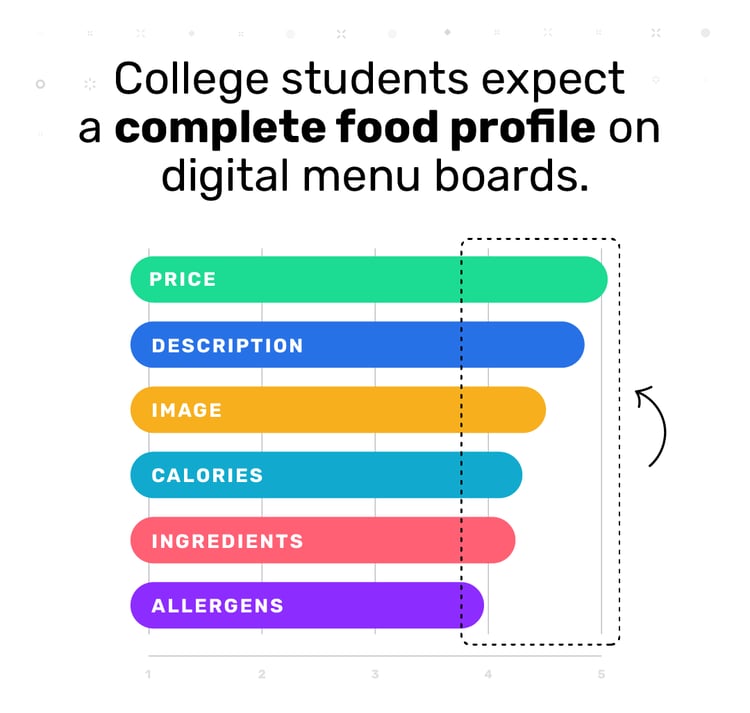Reaching students digitally has never been easier — or more imperative — for higher ed foodservice operators. Through websites, apps, and all-important digital signage boards, the strength (or weakness) of your digital menu presence will play a critical role in students’ decision-making processes.
The pressure is on, then, to make sure you offer the menu information your customers need to choose you again and again.
But what information should you include in these all-important digital channels, you may ask? We surveyed nearly 800 students to find out.
The short answer? Everything should be included. Cumulatively, students told us they want a complete nutrition profile across all digital channels.
Let’s get into exactly what that looks like!
Students prefer digital menu access to other tech.
We asked current college students which digital dining experiences were most important for their on-campus dining and found that they prioritized digital menus — via web, apps, and signage boards — above all else.
Here’s just how many students ranked digital menu solutions in their top-two choices:
- ~50% prioritized online menus
- 44% love mobile ordering apps
- ~35% choose digital menu boards
Above all, students crave information.
Which specific aspects of boards and other digital menus are must-haves? We asked current students to rank the following six menu components in order of how important they were to making an informed ordering decision:
- Item prices
- Food descriptions
- Photos
- Nutrition and calorie details
- Ingredient lists
- Allergen information
While some options outperformed others, the variation from highest to lowest was almost non-existent. Across the board (so to speak), it’s clear that the students lining up outside your dining facilities are hungry for more than just a meal: they want all the details on the options available to them before they commit.
Price tops the list, but other info is close behind.
Maybe unsurprisingly, nearly 30% of students think price is the most important component of menu signage, and more than half (~52%) ranked it in their top two.
Meanwhile, about 40% said that description was the first- or second-most important menu component, compared with one-third who pointed to photos and around 25% who prized each nutritional, ingredient, and allergen information as their first or second choice.

Any way you slice it, the impact is clear: failure to include even just one of the six information types risks disappointing at least a quarter of all student diners.
What you display matters!
When students arrive at one of your foodservice locations or connect with you online, they do so with a set of expectations about what information they can use to make a decision about what (or even if) they’ll eat with you.
Today’s students want more than prices and photos. The savviest higher ed foodservice operators, then, will be those that prioritize comprehensive digital menus across all channels so students have the full range of context and information they’ve come to expect.
And maybe nowhere is this more important than via digital signage, which our research found plays a critical role in student dining decision-making.
For more on that data, read the next blog in our series about why over 70% of students think menu boards are important!